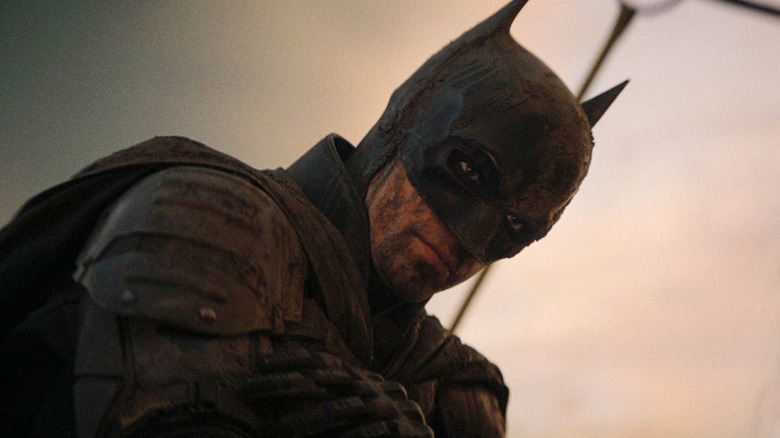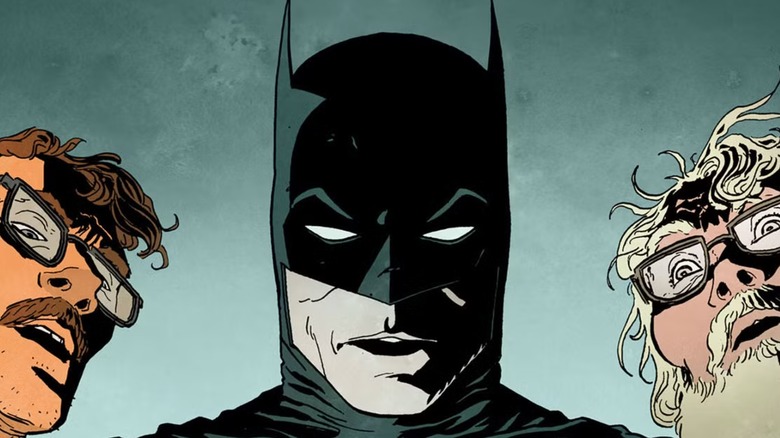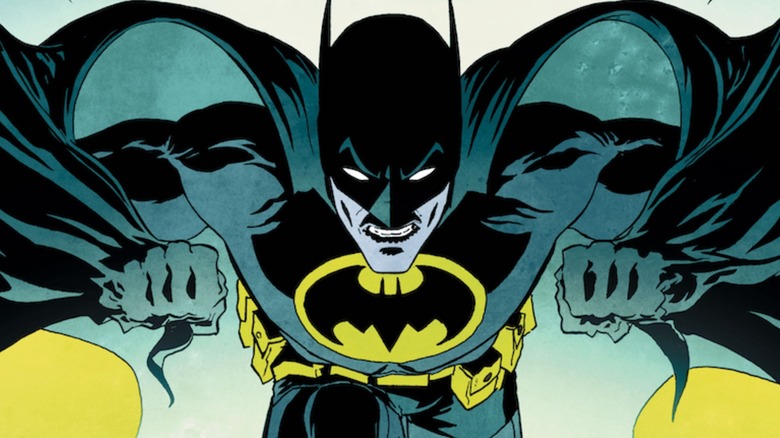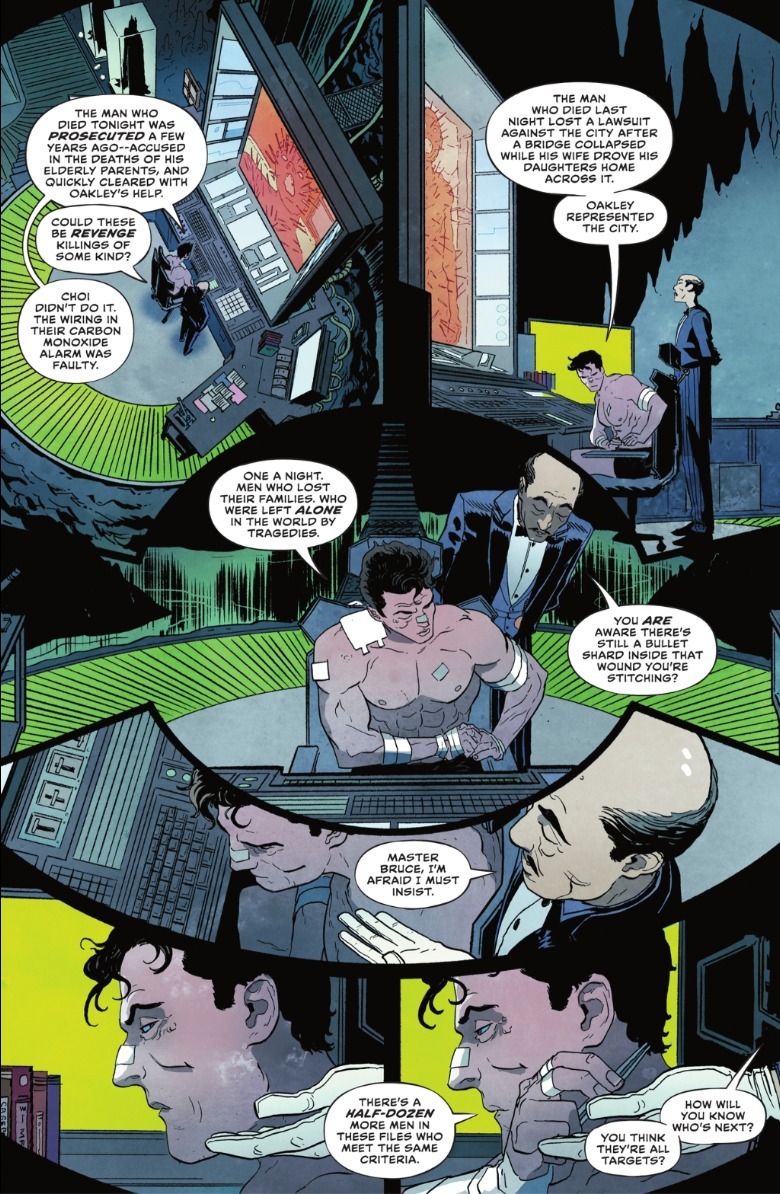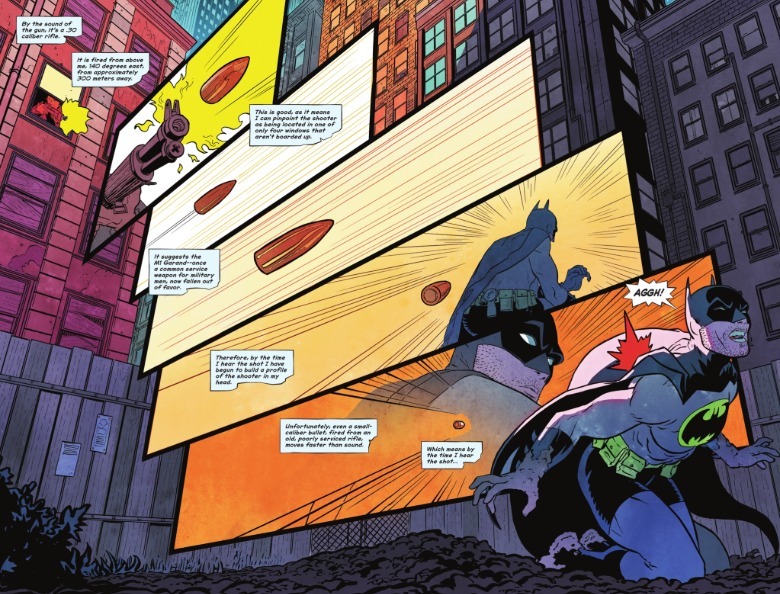DC Has The Perfect Solution For Fans Hungry For Robert Pattinson's Batman Sequel
We may receive a commission on purchases made from links.
With 2022's "The Batman," writer/director Matt Reeves answered the prayers of Bat-fans who'd asked for a detective story Batman movie. Drawing on New Hollywood neo-noirs such as "Chinatown" and "Klute," "The Batman" starred a younger, more uncertain and unwell Bruce Wayne (Robert Pattinson) tracking the Riddler's (Paul Dano) serial killings, which revealed deeper corruption in Gotham City.
There is a sequel to "The Batman" in the works, but it's still some way off, currently targeting a 2027 release. In the meantime, DC Comics has released the perfect comic series for Bat-fans craving something similar to Reeves' movie: "Batman: Dark Patterns" by Dan Watters and Hayden Sherman, which concluded its 12-issue run in November. Set during Bruce's third year as Batman, the book is divided into four three-issue-long story arcs: "We Are the Wounded," "The Voice of the Tower," "Pareidolia," and "The Child of Fire."
Watters and Sherman first worked together on Batman writing/drawing back-up stories in "Detective Comics" issues #1074 and #1081, albeit ones that focused on villains the Ten-Eyed Man and Doctor Hurt. In "Dark Patterns," they focus on Batman himself, reorienting him back into a detective first and foremost. Batman investigates a new gruesome murder(s) each arc. The genuinely gruesome (if exaggerated) violence also lets the book tread into horror.
No recent Batman comic quite captures the vibe of "The Batman" quite like "Dark Patterns" does. (Yes, not even the very good "Batman: The Imposter," written by Reeves' co-writer Mattson Tomlin.) "Dark Patterns" is dark and driven by mysteries not for the squeamish. It also stars a Batman who, like Pattinson's Bruce, is questioning if he's really making a positive difference in Gotham. While he pursues individual cases, the answers to his doubts are the ones Batman needs to find in "Dark Patterns."
Batman: Dark Patterns puts the detective back in the Dark Knight
There are other good Batman comics out right now, but none quite have the classical and low-key vibe of "Dark Patterns." Scott Snyder and Nick Dragotta's "Absolute Batman" is exemplary, but it's also a ground-up reinvention of Batman. The "Absolute" Bruce is less a detective, more of a brawler and a revolutionary vigilante.
Matt Fraction and Jorge Jiménez's new run on the mainline "Batman" book has been fun so far. Taking an optimistic tone like James Gunn's "Superman," it's a relatively sunny comic focused on action, the Bat-family, and Bruce's compassionate side. "Dark Patterns" is there for Bat-fans who want grimier, grittier mystery stories and don't need the Dark Knight saving the world every month.
There is an ongoing throughline in "Dark Patterns," but the arc-long mysteries are self-contained. This structure evokes the old Batman series "Legends of the Dark Knight," an anthology series letting different creators put Batman in self-contained adventures (such as Mike Mignola's graveyard ghost story "Sanctum").
To complement the detective story, Watters and Sherman bring in new supporting characters for Batman: forensic pathologist Dr. Sereika and tabloid journalist Nicky Harris, both archetypes right out of a procedural. The book also mostly avoids the big name Batman villains. There can be only so much "mystery" with a character you've seen Batman best dozens of times.
When Watters and Sherman do pull some recognizable names off the shelf, they do so in unexpected ways. The second arc features the talking dummy, Scarface, seemingly "possessing" an entire tenement building, a premise that might seem ridiculous. Watters and Sherman spin it into both a haunted house story and a "Die Hard" style thriller of Batman locked in a building with Scarface's brainwashed army of tenents.
Dark Patterns is some of the best drawn Batman around
Writing is only half of any good comic though, and "Dark Patterns" is a beautiful showcase for Hayden Sherman. Their blue and yellow-highlighted Batman resembles the style of Tim Sale, artist for the famous Batman mystery story "The Long Halloween." Readers familiar with Sherman's work on "Absolute Wonder Woman" know they rarely use boxy paneling. Take this simple scene in "Dark Patterns" #1 of Bruce and Alfred talking in the Batcave.
An artist could render this scene with repeating panels of Bruce sitting with Alfred standing in the background, only the dialogue changing from panel to panel. Sherman instead draws from different perspectives but keeps your eyes moving to each new frame. Sherman also likes to use panels within panels. In issue #8, they show a bullet traveling to shoot Batman this way. In issue #10, during a panel of glass breaking, they use the shards as the panels. Colorist Tríona Farrell brings her A-game, too. The covers of "Dark Patterns" have high contrasts of warm colors with Batman's blue/black colors. The interior art is similarly rich with moodiness, from fiery oranges to ominous greens.
Batman observes that being a detective takes recognizing which patterns are real and which aren't. Arc no. 3 "Pareidolia" is named for the phenomenon of seeing patterns that aren't there. Anyone looking at "Batman: Dark Patterns," though, can see that it's worth noticing and why.
"Batman: Dark Patterns" #1-12 are currently available, with a collected edition set for release in March 2026.
